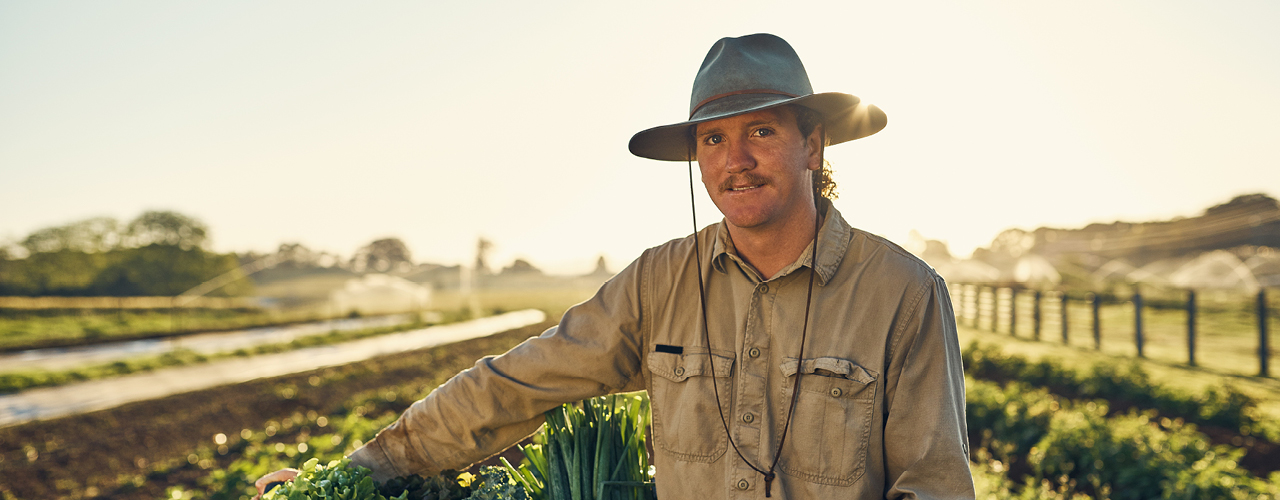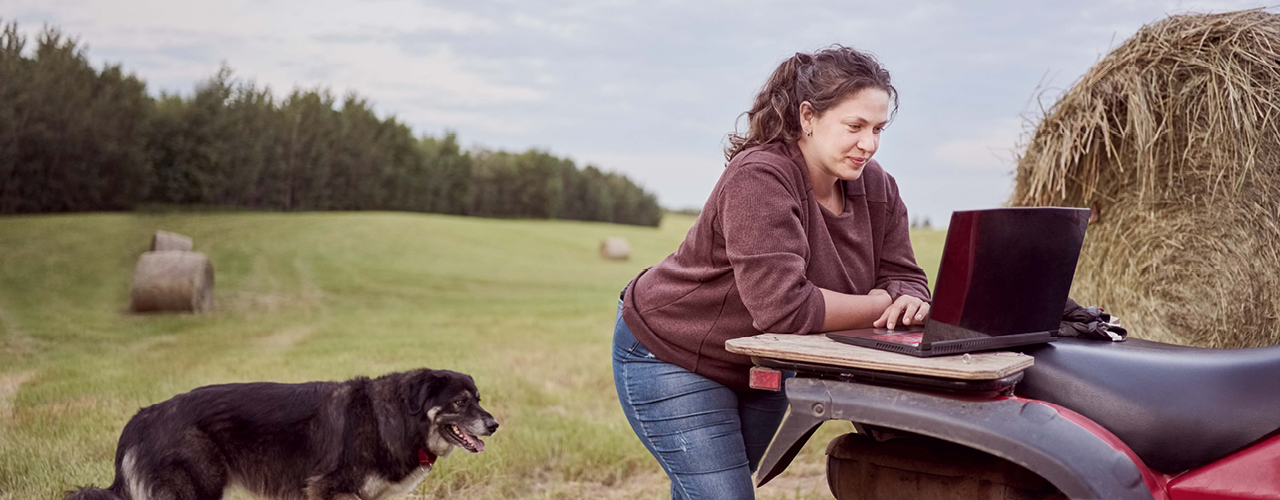Australian farmland values continued to plateau across the first half of 2025 according to the latest report from Bendigo Bank Agribusiness. The national median price of farmland fell to $9,885/ha, representing a minor dip of 3.1 per cent year-on-year. South Australia and New South Wales were the only states to record growth, with a general trend lower in the median price of farmland at a state level. The major drivers of farmland values – commodity prices, varying seasonal conditions and interest rates all played a role in the state-by-state results.
National transactions fell to a record low 3,104 sales, down 11.5 per cent year-on-year and 14.9 per cent below the second half of 2024, well below the five-year average of more than 4,100 sales across the first half of the year. A larger than usual proportion of sales were recorded within the lower priced states of South Australia, Western Australia and the Northern Territory during the first half of the year.
This material shift in the distribution of farmland sales across those states and territories weighed on the national median. The sharp rise in land prices over the last decade has also limited the prospective pool of buyers to those with superior margins and deeper pockets. Efficiencies derived from economies of scale will continue to play a key role in buyer intentions, although generating viable returns at current land prices is likely to become an increasing obstacle for smaller producers.
Growth stalls
Bendigo Bank Agribusiness Senior Agricultural Analyst, Sean Hickey said: “The slight decline in median value marks the first time since 2013 that national growth has stalled across the first half of the year. Ongoing consolidation of landholdings, tighter margins and challenging market conditions have also kerbed the buyer urgency seen throughout 2020-2023.
“In terms of volume, the trend towards fewer overall farmland sales continued across the first half of 2025 with buyers tentative when considering purchases amidst tight margins. This was the case across cropping, dairy and horticultural enterprises with properties taking longer to sell, particularly across more marginal areas.
“Recent relief from interest rates has lifted borrowing power slightly and provided a tangible but modest improvement in market sentiment, however farming input costs including fertiliser, fuel and labour are still significantly higher than two to three years ago, and seasonal conditions linger as a larger factor impacting buyer intention in the current environment.
“The resurgence in livestock markets has also revived sentiment in 2025 and should support demand for grazing properties over the back half of the year where seasonal conditions have been positive, however, lacklustre cropping prices will remain a headwind to demand, particularly in marginal regions still dealing with the effects of drought.
“Improved rainfall across the country is expected to result in a positive shift in buyer interest over the back half of 2025 and into 2026 and further rate cuts should drive more consistent demand for farmland over the coming year”, Mr Hickey concluded.
Fast facts: Australian farmland values
| Median price($/ha) | Number of transactions | ||||||
| 2025 H1 | HoH% | YoY% | 20 Yr CAGR | 2025 H1 | HoH% | YoY% | |
| Tasmania | $17,575 | -20.1% | -25.3% | 7.0% | 41 | -10.9% | -51.8% |
| Victoria | $13,659 | -10.4% | -5.8% | 7.3% | 480 | -17.9% | -27.6% |
| News South Wales | $9,815 | +1.3% | +4.7% | 7.8% | 1,163 | -23.8% | -8.0% |
| Queensland | $9,558 | -3.4% | -2.8% | 7.1% | 713 | -22.4% | -10.9% |
| South Australia | $9,214 | +15.8% | +18.4% | 7.5% | 412 | +56.1% | +6.7% |
| Western Australia | $6,074 | -13.3% | -9.5% | 6.6% | 272 | -5.2% | -5.6% |
| Northern Territory | $2,456 | -24.2% | -60.3% | 5.0% | 23 | +15.0% | +15.0% |
| Australia | $9,885 | -3.8% | -3.15% | 7.2% | 3,104 | -14.9% | -11.5% |
NATIONAL
- Australian farmland values have continued to plateau across the first half of 2025. The national median price of farmland fell to $9,885/ha, a minor dip of 3.1 per cent year-on-year.
- A larger than typical proportion of sales were recorded within the lower priced states of South Australia, Western Australia and the Northern Territory during the first half of the year. This material shift in the distribution of sales weighed on the national median.
- From a volume perspective, the trend towards fewer overall farmland sales continued across the first half of 2025.
- National transactions over this period fell to a record low 3,104 sales, down 11.5 per cent year-on-year.
- The ongoing consolidation of landholdings, alongside tighter margins and challenging market conditions has limited the buyer urgency that was previously seen during 2020-2023.
- Properties are continuing to take longer to sell as a result, particularly across more marginal areas.
QUEENSLAND
- Median price of QLD farmland fell 3.4 per cent to $9,558/ha in the first half of 2025. This is down 2.8 per cent year-on-year but is still the third highest half-yearly price on record.
- The number of transactions was down 10.9 per cent year-on-year, with the 713 transactions recorded the third lowest recorded in more than 30 years.
- From a regional perspective, half recorded lifts and half recorded declines. Transaction numbers were also reasonably split, with 53 per cent in regions that declined and 47 per cent in those that lifted. Two of the top three highest valued regions declined (Southeast and Far North) which account for 37 per cent of all transactions and resulting in a fall in median value at a state level.
- Anecdotal evidence suggests flattening prices are merely a pause, rather than the start of a trend. Positive seasonal conditions and supportive commodity prices mean many farm operations are reasonably well positioned and are not being forced into selling off land.
- High land values are also a consideration, with return from output on the land alone unlikely to be profitable. This means buyers are having to be more selective in acquiring property that will benefit their business and to consider purchases as a longer-term investment, rather than looking for immediate return from production.
- Demand for farmland remains and with easing interest rates and positive seasonal conditions, there is potential for QLD farmland to hold steady or even return to mild growth in the next six months.
NEW SOUTH WALES
- The median price per hectare of farmland in New South Wales strengthened throughout the first half of 2025, albeit at a slowing pace compared to prior years.
- The median price increased to $9,815/ha, up 4.7 per cent compared to a year earlier.
- Diverging seasonal conditions have resulted in a more mixed demand picture.
- Growth in the state’s median price was led by strong year-on-year growth in the Far West, Southeast and North Coast regions.
- Reduced transaction volumes are continuing to support the market with overall sales across the first half of 2025 - now at their lowest level in more than 30 years.
- Transactions were generally lower in the Western regions of the state, with Northeastern regions seeing steadier transaction volumes in comparison.
VICTORIA
- The state’s median price per hectare recorded a moderate decline of 10.4 per cent throughout the first half of 2025.
- The softening in value was driven by poor seasonal conditions across the bigger regions of the Southwest and South & West Gippsland, which reduced the capital many buyers had available to purchase more land.
- This was also evident in a significant reduction in transaction volume, which sits at 480, the lowest half yearly value on record.
- However, with a favourable weather forecast across the back half of 2025 and stronger commodity prices, this could entice buyers to purchase more land throughout the back half of 2025.
- From a regional standpoint, the key movers were South & West Gippsland which dropped from $31,220/ha to $24,747/ha (20.7 per cent) and the Central region which fell from $15,117/ha to $9,031/ha (40.3 per cent).
- Only three of the eight regions recorded a decline, however the significance of these falls applied severe downward pressure on the state median price per hectare.
TASMANIA
- The median price per hectare for Tasmania declined 20.1 per cent to $17,575/ha for the first half of 2025.
- Compared to the same time last year, the median price per hectare has fallen 25.3 per cent.
- The decline is generally due to challenging seasonal conditions and high livestock prices, which has seen the pool of buyers shrinking.
- Transaction volume tightened further for the first half of 2025, decreasing 10.9 per cent, with only 41 transactions recorded from January to end of June 2025.
- There is the possibility for some growth if seasonal conditions improve, however this may lead to lower transaction volumes as sellers become reluctant to go to market.
- Looking at the regions saw mixed results. Median prices in the Northwest and Northern Tasmania fell to $25,243/ha (3.3 per cent) and $17,575 (16.7 per cent), while the South increased to $13,941 (44.6 per cent).
- The increase in the South was not enough to offset the losses in the higher value North and Northwest regions.
SOUTH AUSTRALIA
- The value of farmland in South Australia lifted across the first half of 2025 with the state’s median price of $9,214/ha recording an 18.4 per cent increase compared to a year earlier.
- On closer inspection, a larger proportion of sales took place within higher priced regions than is typical, which assisted in artificially pushing the statewide median higher.
- When analysed at regional level, the impact of the ongoing drought on land prices seen across the reporting period become much more apparent.
- A total of five out of the state’s seven regions recorded a year-on-year decline in median price per hectare.
- Demand for both grazing and cropping farmland over the last six months remained under pressure as producers grappled with the record rainfall deficits.
- Lower rates and improved seasonal conditions are starting to see the emergence of a more favourable demand environment.
- We expect to see a return to modest growth across the majority of regions over the back half of the year and into 2026.
- Transaction volume in the first half of 2025 lifted to its highest level since the first half of 2023 with 412 sales recorded.
WESTERN AUSTRALIA
- The median price of Western Australian farmland fell to $6,074/ha in the first half of 2025, a 9.5 per cent year-on-year decline. This headline fall was driven less by broad price weakness and more by shifts in the type and location of properties sold.
- Four of six regions recorded gains. Avon-Midland led with a 38 per cent rise (to just under $10,000/ha), followed by the Great Eastern (+27 per cent), Northern (+7.4 per cent) and the premium Southwest (+4.9 per cent).
- In contrast, the Great Southern (-1.2 per cent) and Central (-3.6 per cent) slipped lower.
- Transaction volumes fell sharply in high-value regions. Sales in the Southwest dropped more than 30 per cent, while the Great Southern saw nearly 30 per cent fewer deals, particularly in mid-tier parcels.
- Activity surged in lower-value zones with transactions up by 52 per cent in the Great Eastern and 36 per cent in the Northern region. These cheaper sales pulled down the state-wide median despite local price gains.
- Small (50-200ha) property sales declined almost 12 per cent, while 600+ ha blocks rose nearly 10 per cent.
- Larger blocks traded at much lower per-hectare values, down 26 per cent to just under $3000/ha.
- The overall fall in median prices at a state level reflects a composition effect: fewer premium sales at the top end, and more large, lower value transactions in northern and eastern areas.
Australia’s most valuable farmland by region
Tasmania – Northwest and Northern: $25,143/ha
Victoria – South and West Gippsland: $24,747/ha
South Australia – Adelaide and Fleurieu: $23,651/ha
Western Australia – Southwest: $18,357/ha
New South Wales – North Coast: $14,948/ha
Queensland – North $14,946/ha
See the full Bendigo Bank Agribusiness Farmland Values Report and research and analysis into commodities, business performance and topical agricultural issues at Agriculture insights







